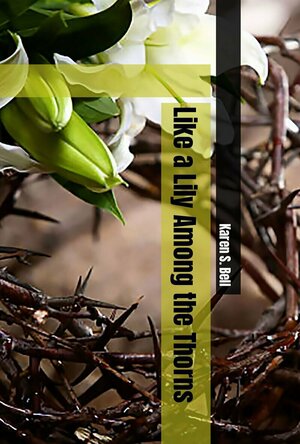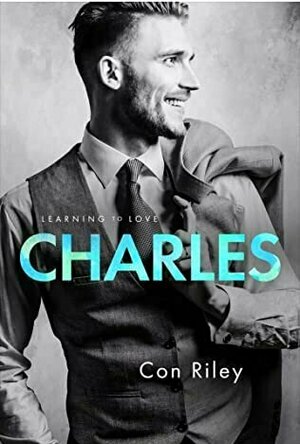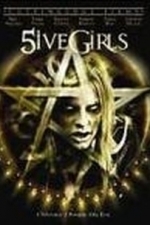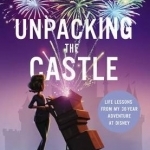
Beyond the Castle: A Guide to Discovering Your Happily Ever After
Jody Jean Dreyer and Stacy L. Windahl
Book
When the credits roll and you've left the park, when your Disney day is over, how do you take the...

Hakuoki: Premium Edition
Games
App
Hakuoki: Premium Edition “Hakuoki”, the otome game that gained popularity not only in Japan but...
Gareth von Kallenbach (980 KP) rated Jason Bourne (2016) in Movies
Jun 19, 2019
Thankfully Writer/Director Paul Greengrass has returned with Damon to in the new film “Jason Bourne” The film opens with Bourne in hiding and living off the grid in Greece. He sustains himself by taking part in full contact matches and has regained more of the memories he has forgotten since the events prior to the first film.
His former associate Nicky Parsons (Julia Stiles) has managed to hack into the government and has obtained numerous files about covert operations including a new and greater program as well as information about Bourne and his father.
The leak catches the attention of Director Robert Dewey (Tommy Lee Jones) and he tasks ambitious Agent Heather Lee (Alicia Vikander) to find and stop Bourne and Parsons.
At the same time, Dewey is working with a software developer to ensure that the government has unlimited access to all the users of his software in order to maintain surveillance upon them. Uncomfortable with this arrangement the developer (Aaron Kalloor) threatens to expose what the government has been up to at a big software expo in Las Vegas before a worldwide audience.
With this new threat and Bourne resurfaced, a cold and deadly assassin is dispatched and in locales ranging from Greece, Berlin, London, and Las Vegas as Bourne attempts to get the answers he wants and to settle some old scores with danger all around him.
The film takes a bit to get up to speed but once it does it delivers the action and political intrigue that fans of the series have come to expect. Naturally it does at times require a few leaps of faith but in the end, Bourne is back better than ever and Damon reminds us of how much he owns this character with her performance. Here is hoping we do not have as long a wait for him to return in a new Bourne adventure.
http://sknr.net/2016/07/29/84102/
Merissa (13592 KP) rated Like a Lily Among the Thorns in Books
Jun 20, 2022
This story is told mainly from two perspectives - Gabrielle and a narrator. You also get odd chapters either told from other perspectives, or by the narrator giving you further information on one of the other characters.
In a Cinderella-esque way, Gabrielle's life turns around, due to her faith in the cosmos. She practices mindfulness and is determined not to let life get her down. This is partly due to her childhood. Unfortunately, at times, this made her seem un-grounded and living in a fantasy land, refusing to face reality. After some adventures, she ends up at her B&B in Vermont, with a host of characters to support her. In fact, apart from being the owner, I'm not entirely sure what her role was.
This is a wordy book, with some unfortunate info-dumps throughout. There are also hints and questions asked of the reader that goes nowhere. The pacing is okay but it could definitely be tightened up in places. And there is no need to head-hop into the mind of a minor character who is only there for a page or two. Although the blurb states they are a 'group of saviors', just how they are supposed to do this apart from changing the B&B is unclear, especially given that they are all ignoring the problem towards the end.
On the whole, this was an enjoyable book about a crisis I firmly believe in. I guess my hopes were higher than were realistic. This is my first read by this author. If you have read her work before and liked it, I think you will like this story. As for me, I found it tricky to get along with.
** same worded review will appear elsewhere **
* A copy of this book was provided to me with no requirements for a review. I voluntarily read this book, and the comments here are my honest opinion. *
Merissa
Archaeolibrarian - I Dig Good Books!
Whether you're facing struggles with singleness, the mounting challenges of marriage and motherhood, health issues, a financial crisis--God has equipped you to walk in freedom and confidence as you abide in Him, strengthened by His power and provision. Through the stories of eleven brave women of the Bible who made faith-filled choices that positioned them for success, LaTan Roland Murphy exhorts, encourages, and empowers women of all ages. With warmth and wit, she illustrates how you, like Deborah, Jael, Mary, and others, can look beyond your circumstances and lay hold of the courage needed to
· draw closer to Jesus when facing illness, isolation, or rejection;
· live and give generously, even amid financial hardship; and
· step out into faithful, fearless living as a wife, mother, friend or coworker--no matter the season of life or what lies ahead.
Thought-provoking study questions and an interactive journaling section will help take you even deeper in your quest for a more courageous, confident life, either on your own or with a group.
My Thoughts: What are you afraid of? Is it stepping out and doing what God has called you to do? Is it facing an illness, a death? Or maybe some other type of hardship or even a new venture in life. LaTan Roland Murphy has written an excellent book, using women of the Bible to help illustrate how we can overcome our fear and insecurities. In this study the reader will take a look into the lives of Deborah, The woman with the issue of blood, The widow with two coins, Jael, Abigail Bathsheba, just to name a couple.
This is a working book, the author takes you on a journey into each of these women's lives and has you search and see how they found the courage they needed to live their lives and accomplish what God intended for them to do.
I love the way she has written this book, You read a chapter, then the author has you read scripture and apply what you learned by answering questions at the end of each chapter. She has a style of writing that is easy to read and understand. You can follow along and immerse yourself in the book.
This can be a study you do alone, or in a group setting. I recommend this book for all Christian women to read, young or old, it will certainly draw you closer to God, and give you the courage to carry on.
LaTan Roland Murphy is an award-winning author and speaker with writing featured in HOAwomen magazine. She is the author of Becoming a Woman of Interior Elegance and coauthor of God's Provision in Tough Times. She is also the founder of The Colors of His Love Women's Conference. She and her husband, Joe, have three adult children and two delightful grandchildren. They live in Raleigh, North Carolina. Please visit her website at www.latanmurphy.com.
I received this book free from the publisher. I was not required to write a positive review and the opinions I have expressed are my own. I am disclosing this in accordance with the Federal Trade Commission’s 16 CFR, Part 255 : “Guides Concerning the Use of Endorsements and Testimonials in Advertising.”
Debbiereadsbook (1617 KP) rated Charles (Learning to Love #1) in Books
Jul 28, 2021
Once upon a time, there was a reader much like yourself. She read for pleasure, but also had fallen down the slippery slope of reading to review, so every book she read needed a review written. Fun, but hard work sometimes, especially when said reader found herself in a book funk of EPIC proportions, and that almost every book she read, was dumped.
Then THIS book landed in her queue to read and review. There had been lots of books dumped this past week, and there weren't many review books in her queue, but this one was asked for ages ago, and so she wanted to read it. So on a quiet evening at work, she jumped in.
And she was pulled back into the small Cornish village that this book is set, the same one that feature in the HIS series, and she was pulled deeper and deeper and she did not stop reading! Well, she did, but only because she was at work! Going home, and she finished this book, staying up waaaaaaaaaaaaaaaaaay past her bedtime, and she loved it!
She loved Charles. Charles is the third son of an Earl, but he just wants to use his degree to help children who might slip through the net, much like he did. His undiagnosed dyslexia meant he did not get the help he needed as a child, and he doesn't want that for another child. He sees the world differently and wants to help. Applying for the teachers job for a group of 4/5 year olds is his dream job. But the head doesn't think Charles is qualified enough but offers Charles a different sort of job. To bring a smile to his friend's face again.
The reader loved Hugo too. Even though Hugo isn't given a voice, the reader heard him good and well when he speaks. When he touches Charles, when Charles touches him. Hugo was HEARD. Hugo's calling is questioned but his faith is not. He needs to make a decision about fully committing to the church, but he also needs to heal first. Charles helps him to heal, inside and out.
The reader loved that Hugo doesn't hold Charles' history against him. Loved the fact that Hugo almost embraced it. The reader was made to cry. Charles has a deep soul, and he wears his emotions on his face and Hugo sees Charles, really SEES him.
The reader loved that Kier and Mitch, from His Haven. Charles and Kier are best friends. Loved that Kier saw Charles too, just in a different way to Hugo. The reader loved that Charles and his brother George got on soooooooooo much better towards the end of the book than the beginning!
The reader found this a very emotional book. Whether that was because of Charles, or Hugo or them both together, she wasn't quite sure, but she loved that it was. There are deep and complex emotions in this book, and it made the reader slow her reading down, to fully appreciate them.
And the epilogue?? Oh, the reader bawled her heart out at that, she really did!
So, all in all, the reader LOVED this book! The reader wants more of this author!
And the reader lived happily ever after, because lots of this author's books are now settled on her kindle!
The end, with 5 full and shiny stars!
**same worded review will appear elsewhere**

Church Times - the world's leading Anglican paper
News and Magazines & Newspapers
App
Welcome to the brand new Church Times app. ABOUT THE CHURCH TIMES The Church Times is the...
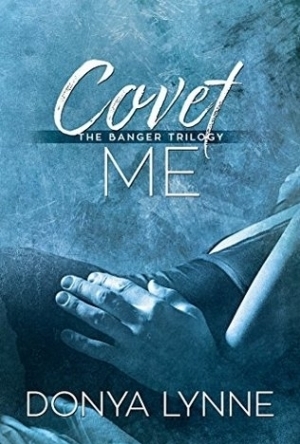
Covet Me (Banger Triolgy #2)
Book
She wants a sexy summer fling. He wants more. And he won’t stop until he gets it. NOTE: This...
Darren (1599 KP) rated 5ive Girls (2006) in Movies
Jun 20, 2019
The girls discover they are all witches with different powers and when Alex starts getting haunted by Elizabeth but what is she trying to communicate. We learn that Miss Pearce (Lalonde) is involved with what is going on but is she good or bad? Could these girls have been bought together for a reason? The girls find themselves battling the ancient demon Legion who wants to walk the Earth once more.
5ive Girls gives us a witch based film where the witches are not evil but instead fighting evil. Having the girls not fully understanding their powers works because we get to learn about them with them but saying that doing that really doesn’t help when they get picked off easily. I would like to see more about the girl’s powers but in the end we just have basic ideas of them. The story does work well for the fighting evil but also could just have been an episode of Buffy the Vampire Slayer.
Actor Review
Ron Perlman: Father Drake is haunted by losing one of his students to an evil spirit, he is bought back to the school to finally make up for what happened but finds himself fighting the same evil that took away his faith. Ron is good in this role even if he is more of a supporting character than leading man.
Jennifer Miller: Alex is the last of the five new girls to arrive at the school, she has the ability to prevent and move objects with her mind. While in the school she finds herself having to work with the other girls to solve the hauntings going on in the school. Jennifer is solid in this role that works as the unsure girl.
Jordan Madley: Mara is the streetwise of the five girls, she is overly aggressive when it comes to protecting herself but is great to have on the right side when it comes to fighting the evil. Jordan is good as the bad ass chick that is actually very insecure.
Terra Vnesa: Cecilia is one of the students, she is the blind student who makes light of her disability being one of the main comic reliefs in the film. Terra is good because she is the funniest of the characters involved.
Support Cast: 5ive Girls only has a couple of extra cast members that end up doing just as good a job of the rest of the cast.
Director Review: Warren P Sonoda – Warren gives us a solid film that is easy to watch but never really challenges us.
Horror: 5ive Girls has good horror elements of good versus evil along with solid gore moments.
Thriller: 5ive Girls keeps us guessing to what will happened next as well as wondering what is going on through the story even if you can work parts of the film out.
Settings: 5ive Girls keeps nearly all the film in one place the school that is meant to be locked from the outside.
Special Effects: 5ive Girls has solid effects for the kills but when we see Legion we don’t get the best effects.
Suggestion: 5ive Girls is one to watch if it is on late night television. (Late Night TV)
Best Part: Only having early witch abilities.
Worst Part: Slightly predictable.
Funniest Scene: Blind girl searching for someone alone while still enough people to do it in pairs.
Believability: No
Chances of Tears: No
Chances of Sequel: No
Post Credits Scene: No
Oscar Chances: No
Budget: $3 Million
Runtime: 1 Hour 35 Minutes
Tagline: 5 Witches. 5 Powers. One Evil.
Overall: Easy to watch horror that does lack scares but has strong elements.
https://moviesreview101.com/2016/10/05/movie-reviews-101-midnight-halloween-horror-5ive-girls-2006/

